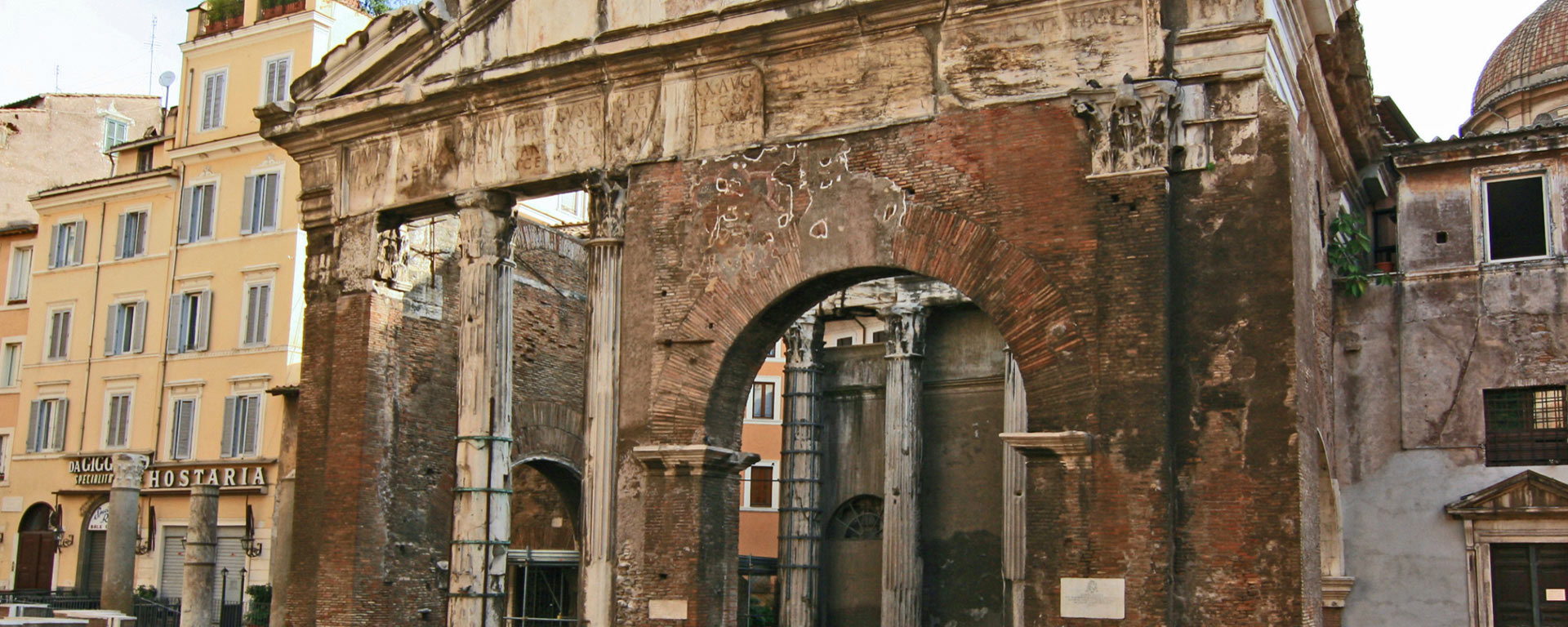
Jewish Ghetto Rome
The Jewish Ghetto is one of Rome’s oldest and most distinctive neighbourhoods.
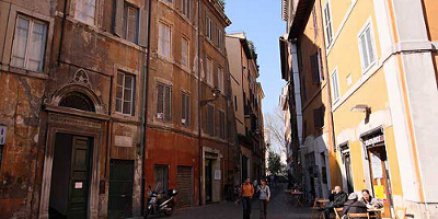 It dates back to the 1500s when the Catholic Church created a specific walled suburb in which the Jewish Community of Rome were physically forced to live.
It dates back to the 1500s when the Catholic Church created a specific walled suburb in which the Jewish Community of Rome were physically forced to live.
Prior to that, the Jews had lived wherever they wanted to and the community is known to have been in Rome long before the time of Julius Caesar, most of whom they supported.
jewish ghetto
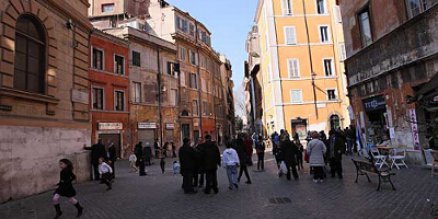 In 1555 Pope Paul IV Carafa passed the papal bull or law called Cum Nimis Absurdum which forced the Jews to live in the area between modern day Via del Portico d’Ottavia, Lungotevere dei Cenci, Via del Progresso and Via di Santa Maria del Pianto.
In 1555 Pope Paul IV Carafa passed the papal bull or law called Cum Nimis Absurdum which forced the Jews to live in the area between modern day Via del Portico d’Ottavia, Lungotevere dei Cenci, Via del Progresso and Via di Santa Maria del Pianto.
The Ghetto had a wall all the way around it with gates which were locked at night time.
The Jews could move about Rome during the day but had a curfew one hour after sun down.
This area of Rome was chosen to be the ghetto due to its proximity to the Tiber River; the river flooded frequently making the region the most undesirable suburb of the city in which to live.
ghetto neighborhood
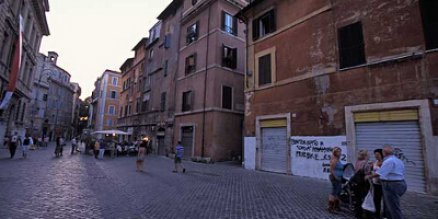 Life was harsh for the residents of the ghetto.
Life was harsh for the residents of the ghetto.
They were not permitted to own property and they were forced to go to Catholic mass services on the Jewish Sabbath.
There were laws banning Jews from doing qualified jobs meaning unskilled labour was the norm.
When they were allowed to leave the ghetto, Jews had to wear yellow clothing as a sign of their religion; yellow being the colour of cowardice and betrayal, a direct insult.
Having a defined area and not being allowed to live outside it meant as the population expanded the residents of the ghetto had to build upwards.
This caused cramped conditions and increased the spread of disease.
ghetto jewish
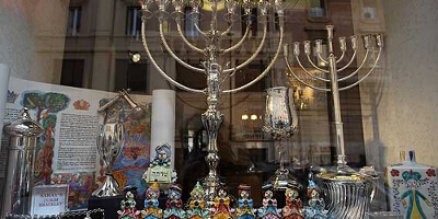 Finally every year the Jews of Rome had to swear an oath of allegiance to the Pope, who was the king of the Papal States where Rome was located, at the Arch of Titus in the Roman Forum.
Finally every year the Jews of Rome had to swear an oath of allegiance to the Pope, who was the king of the Papal States where Rome was located, at the Arch of Titus in the Roman Forum.
Titus was the general who defeated the Jewish Revolt against the Romans in 70 A.D. and indirectly caused the demolition of the second Jewish Temple.
Coupled with this was a tax of every Jewish person for the right to live in the ghetto.
jewish ghetto rome
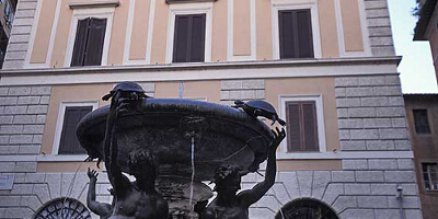 During the Papacy of Pius IX the restrictions on the Jewish people were slowly relaxed.
During the Papacy of Pius IX the restrictions on the Jewish people were slowly relaxed.
In was in his pontificate that the Papal States were abolished by the new Kingdom of Italy.
Rome was seized and proclaimed the new capital of the new country.
All sectarian and racist laws against anyone became illegal and the Jews became full citizens of a United Italy.
jewish quarter rome
This scenario remained until Mussolini took power in the 1920s.
Initially he had no problem with Jews, many of his party were Jewish as was his mistress who lived with him in Palazzo Venezia.
As Hitler, who admired and copied Mussolini, gained increasing influence he forced Mussolini to pass a law against the Jews of Italy, which Mussolini acquiesced to and eventually enforced.
The Jews would not be victims of murder until the Germans took Rome in the 1940s and did indeed deport many Jews to concentration camps.
Rome would be liberated by the Americans and Italian partisans and the Jews of Rome went back to being full citizens of Italy.
Pope John Paul II officially apologised to the Jewish community of Rome for the actions of the Catholic Church and he worked for greater relations between the two faiths.
Prior to his death he was visited by the Chief Rabbi of Rome who commended his efforts of reconciliation.
great synagogue of rome
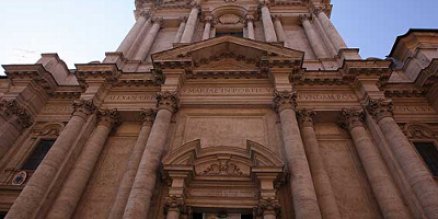 Once the Jews became citizens of Italy in 1870, they started planning to build a synagogue in the Ghetto.
Once the Jews became citizens of Italy in 1870, they started planning to build a synagogue in the Ghetto.
Apartment blocks were demolished to make way for the new building which was intentionally eye catching, a mark of pride and liberation after years of oppression.
Finished in 1904 after 4 years of work, the temple was the work of Vincenzo Costa and Osvaldo Armanni, two Italian architects.
As well as a functioning temple, it is also houses the Jewish Museum of Rome and visits by the public are permitted.
jews and romans
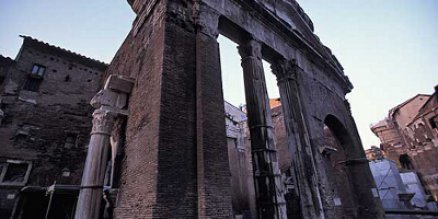 The Portico of Octavia was a temple built by Rome’s first Emperor Augustus in honour of his sister Octavia Minor.
The Portico of Octavia was a temple built by Rome’s first Emperor Augustus in honour of his sister Octavia Minor.
Built shortly after he became effective Emperor of Rome in 27 B.C., it joined other honorific edifices to the imperial family such as a library, voting building or curia and training school for civic guards.
These buildings may have been joined together by a colonnade, parts of which remain below the portico.
Like many buildings in Rome the Portico of Octavia burned in the fire of 80 A.D. and was repaired by Domitian, the last emperor of the Flavian family.
Another fire in the early 3rd century forced restorations to be carried out by Septimius Severus and Caracalla as had been the case with the Pantheon.
The Theatre of Marcellus
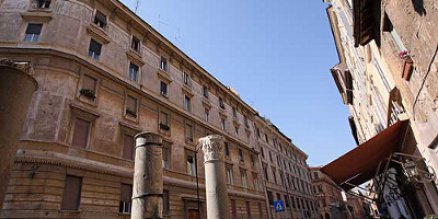 The Theatre of Marcellus was built in 13 B.C. in honour of Marcus Claudius Marcellus who was the nephew of Augustus.
The Theatre of Marcellus was built in 13 B.C. in honour of Marcus Claudius Marcellus who was the nephew of Augustus.
The son of the emperor’s sister Octavia Minor, whose portico is beside, Marcellus was Augustus’ designated successor as Emperor.
Augustus sponsored Marcellus’ career but unfortunately the young man died aged 19 and never saw his theatre completed.
The emperor may have chosen the young man as besides being his closest male relative, he was also his nephew; Caesar had similarly chosen his nephew when he designated Augustus, then Gaius Octavian, as his successor.
The original space for the theatre was cleared by Julius Caesar.
When he died in 44 B.C., Octavian Caesar, later known as Augustus, continued his building works.
The building is primarily made of tuff stone and concrete with the outer layer faced with travertine marble.
A network of arches provide access to the seating inside where plays and concerts would have been held.
The theatre would have extended around in a full semi-circle or 180° and the steps would have reached the top level as with all Roman theatres.
On the bottom level the outside columns were Doric or simple, on level two ionic or containing a scroll at the top, and on the third level Corinthian capitals showing acanthus leaves were used.
The third level has not survived and has been replaced by modern day apartments.
After the fall of the Roman Empire the theatre of Marcellus became a fortress owned by noble families who competed for the dominance of Rome.
These were the Fabii, the Savelli and most famously the Orsini who had the top level converted by Baldassare Peruzzi who had been an architect of St. Peter’s Basilica.
The Theatre of Marcellus, with its many arches on the outside, was a direct inspiration for the Colosseum or Flavian Amphitheatre.
An amphitheatre is two theatres, or semi-circles put together to create a stadium or double theatre with increased seating capacity.
The Colosseum would keep the order or Doric, Ionic and Corinthian for its outside columns and added a fourth level with shields and windows.
ghetto tours
The Jewish Ghetto of Rome is a great place to take a stroll, have an amazing dinner or lunch, see the ancient Roman ruins or medieval fountain in an off the beaten track of Rome.
If you would like to take a tour of the Jewish Ghetto of Rome as part of the squares of Rome tour, you can send me an email via the link in the menu.
3 hour Walking Tour of the Piazzas and Fountains of Rome Italy
Rated 5.0/5 based on a selection 10 customer reviews out of thousands.
